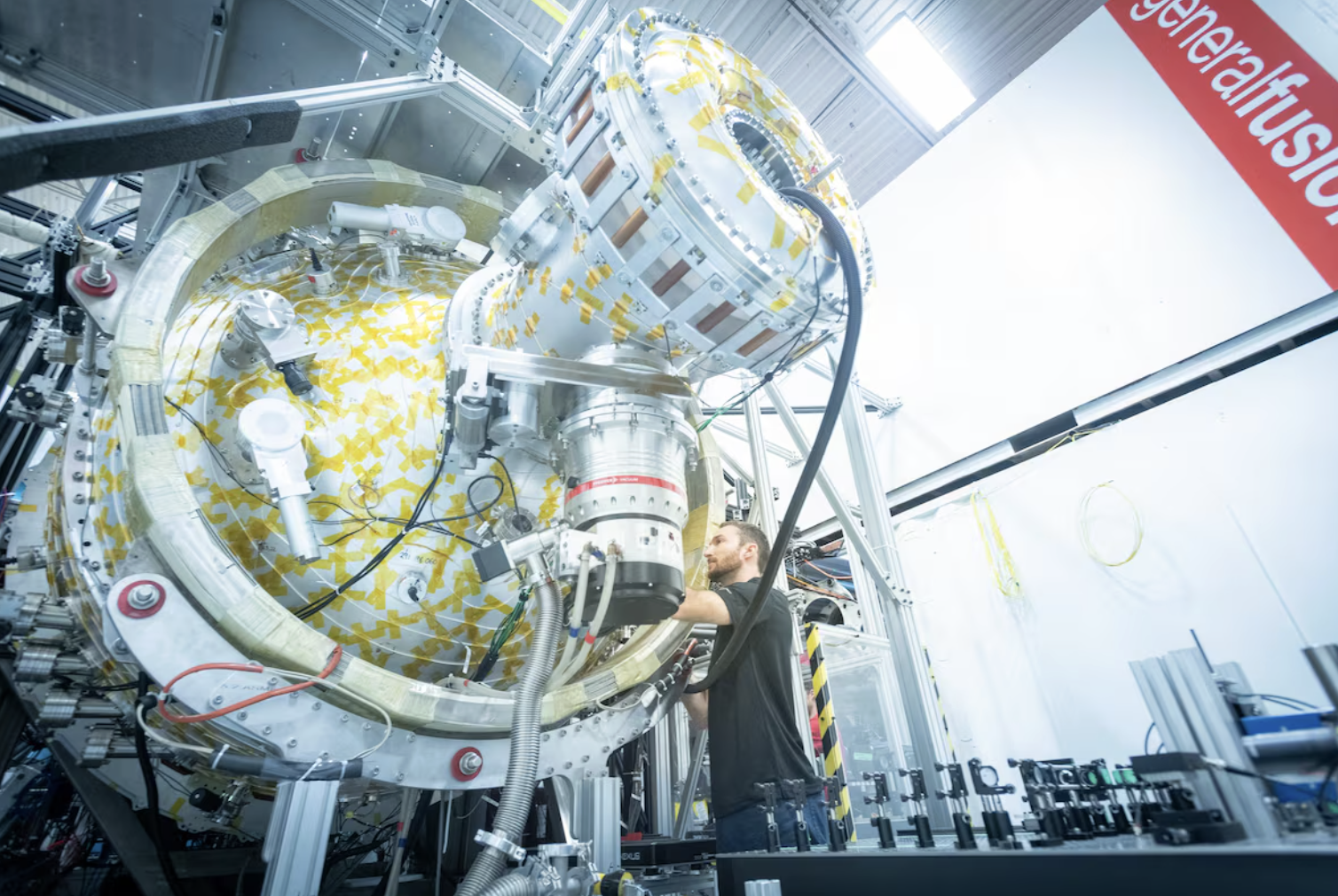Three months after hitting a funding crunch, General Fusion Inc. has secured US$22-million to finance the pursuit of its next scientific milestone in a generation-spanning attempt to develop commercial-scale fusion reactors.
The Vancouver company raised the money in a rights offering known as a “pay-to-play” deal. About 70 per cent of its existing preferred shareholders bought their pro-rata share in the deal to maintain their stakes in the company, including Shopify Inc. chief executive officer Tobi Lütke’s family investment company Thistledown Capital and JIMCO, the global investment arm of Saudi Arabia’s billionaire Jameel family.
Some that didn’t, including Singapore sovereign wealth funds Temasek and GIC, saw the relative size of their stakes shrink significantly. Business Development Bank of Canada, a long-standing investor, also didn’t participate, but was protected against dilution because of protections it secured when it led General Fusion’s last two financings.
“I feel very optimistic because we have an activated set of shareholders that proved through this difficult time that they’ll step up and that they believe in the company and the opportunity,” General Fusion CEO Greg Twinney said in an interview.
General Fusion at financial crossroads in quest to build ‘break-even’ reactor
General Fusion delays U.K. demonstration plant to focus on Canadian project
General Fusion previously raised US$350-million, about 75 per cent from private investors and the rest from government sources. The company was last valued at US$425-million after raising US$25-million in 2023. The new deal doesn’t reset its valuation but gives participating investors the right to buy into the next financing at a discount.
The funding falls well short of the company’s goal to raise US$125-million, which would enable General Fusion to fully develop its LM26 fusion demonstration device and reach the 100-million-degree temperatures needed to cross what it calls scientific break-even – the point beyond which the machine would produce more energy than it takes in if it were to be loaded with the appropriate fuel mix.
General Fusion would then set out to build a larger working reactor to prove the viability of the technology as a method of commercial power generation. Other companies in a global race to develop limitless and clean fusion energy, include Commonwealth Fusion Systems, Helion Energy, TAE Technologies and Zap Energy.
But the geopolitical environment – including U.S. President Donald Trump’s fondness for fossil-fuel industries – and shaky markets for complex, experimental technologies, has hurt capital-raising efforts.
Mr. Twinney wrote in an open letter in May the company faced “unexpected and urgent financing constraints,” which forced it to lay off one-quarter of staff and reduce operations. “We needed capital, really quickly,” he said Monday. “We were running out of time.”
Adam Rodman, chief investment officer with Segra Capital Management, a Palm Beach, Fla.-based hedge fund which first invested in 2021, said in an interview that he and other “proactive interested shareholders” felt the best course would be a modest, quick financing round led by existing investors to give the company “the least amount of capital possible” to reach its next scientific goal.
More stories below advertisement
That involves heating the plasma, which contains an isotope of hydrogen called deuterium, in its test device to 10 million degrees. General Fusion expects to achieve that within a year. Segra bought more than its pro-rata share, increasing its stake to 12.5 per cent from 5 per cent. Mr. Rodman is also joining the board.
Mr. Twinney said once General Fusion hits the 10-million-degree goal, “it significantly changes the game because it proves out the first milestone of our science in LM26. We’ve seen competitors raise capital on that. We’ve also learned from many global investors that this milestone is important for them.”
David Barr, CEO of PenderFund Capital Management Ltd., another long-standing investor, said his firm put nearly US$5-million in the round – increasing its stake to 11 per cent from 3 per cent and gaining a board seat – because of General Fusion’s narrowed focus on getting its demonstration device “toward a more commercially viable end point and doing so in a more capital-efficient way.”
General Fusion was founded in 2002 by physicist Michel Laberge, who sought to revive an approach to nuclear fusion that was shelved in the 1970s. The method, which is different from other companies’, includes using a metal sheath to momentarily contain and then rapidly compress plasma to reach the temperatures and pressures needed to initiate fusion reactions.
After years of development in B.C., General Fusion agreed with the U.K. Atomic Energy Authority in 2022 to build its own demonstration reactor in Oxfordshire. It put those plans on hold a year later as the company focused on the LM26 in Canada to prove out its technology.
The test machine is not designed to generate electricity because it only uses deuterium, rather than the deuterium-tritium mix that can deliver a higher energy return. But it is the precursor to a full-scale fusion reactor the company ultimately hopes to develop.
Last spring the LM26 machine successfully compressed and heated deuterium plasma that was injected into a solid lithium liner. Prior to its downsizing, General Fusion said it was on track to achieve the 100 million degrees needed to ignite fusion reactions in 2026 using the deuterium-tritium mix.


